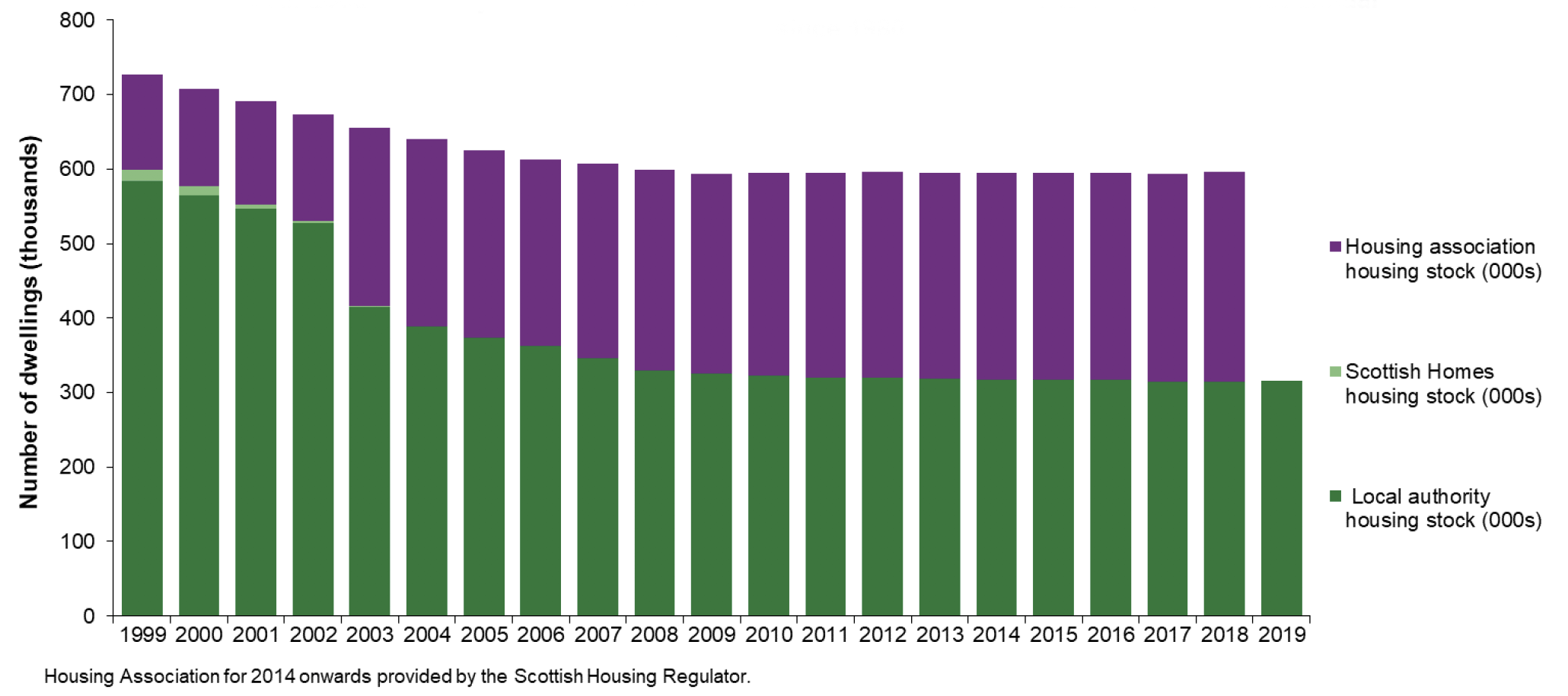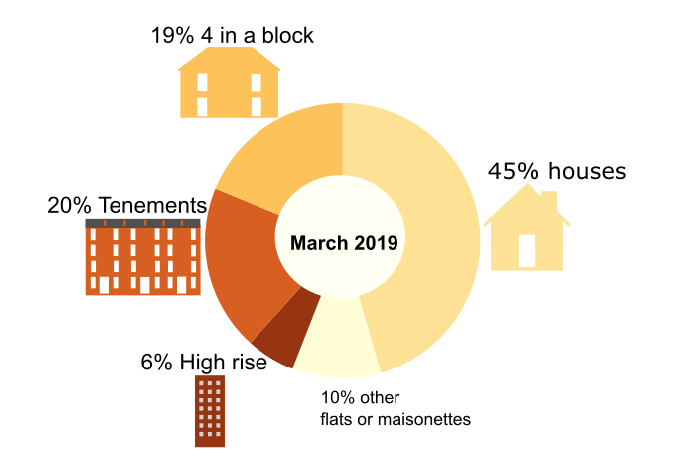Housing statistics 2019: key trends summary
Annual statistics up to 31 March 2018 on total new housing supply in Scotland across all sectors, along with information on various elements of local authority housing such as stock, lettings, house sales, evictions, housing lists, and housing for older people and people with disabilities.
This document is part of a collection
Local Authority Housing Stock
Local authority stock levels have been decreasing since the 1980s, although the rate of decrease has slowed in recent years. As at 31st March 2019 there were 315,625 local authority units, up by 1,192 units (0.4%) on the previous year, the first annual increase in local authority stock in Scotland since 1980.
The drops in the years since the 1980s can be attributed to 3 main factors:
- tenants buying their homes under Right to Buy
- transfers of stock from public authorities to Registered Social Landlords (RSLs)
- a decline in the number of new local authority dwellings being built.
In general these factors have become less significant in recent years, and the provision to end Right to Buy with a two year notice period was included in the Housing (Scotland) Act which received Royal Assent on 1st August 2014, with the scheme subsequently closing to all new applicants on 31st July 2016. In addition to this, the Scottish Government’s introduction of the Council House Building programme from 2009-10 onwards has seen a significant numbers of new council houses being built in the years since this. As a result, the latest year is showing the first annual increase since 1980.
Local authority stock levels have increased by 1,192 units (0.4%) from the previous year, to 315,625 units on 31st March 2019. This represents a substantial change since the mid-1990s when public authorities owned nearly 90% of the 783,000 units of social rented stock[3]. The increased contribution of Registered Social Landlords to the social rented sector is reflected in their rising stock levels since the late 1990s. Chart 8a below shows recent trends in the ownership of social rented housing stock.
Chart 8a: Local authority stock has increased slightly in the latest year to 315, 625, the first annual increase since 1980

Link to tables on local authority housing stock: http://www.scotland.gov.uk/Topics/Statistics/Browse/Housing-Regeneration/HSfS/Stock
Scottish Government Social Tenants Statistics compendium publications present additional information on social landlord stock:
https://www.gov.scot/publications/social-tenants-scotland-2017/
Looking at local authority owned housing stock by dwelling type, 45% of local authority housing stock at March 2019 were houses. The remaining stock consists of 4 in a block (19%), tenement flats (20%), high rise flats (6%), and other types of flats and maisonettes (10%).
Chart 8b: Nearly half of local authority owned dwelling stock were houses at 45% as at March 2019

There were some regional variations in the type of stock held by the different councils. Local Authorities with the highest percentage of houses were Orkney (84%), Shetland (84%), Moray (76%) and Highland (74%). Edinburgh and Renfrewshire had relatively high percentages of their stock as flats (82% and 79% respectively). The highest proportions of stock in high-rise flats were seen in Aberdeen (18%), Edinburgh (15%), and West Dunbartonshire (14%), whilst tenement flats were relatively common in Dundee (52%) and Edinburgh (51%). In East Ayrshire, South Ayrshire and West Dunbartonshire, 28% of stock was in 4 in a block flats.
Link to tables on stock by type: http://www.gov.scot/Topics/Statistics/Browse/Housing-Regeneration/HSfS/Stock
Contact
Email: lyndsey.middleton@gov.scot
There is a problem
Thanks for your feedback